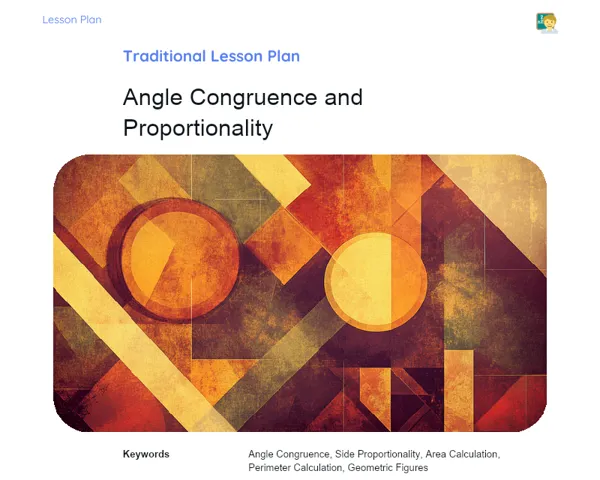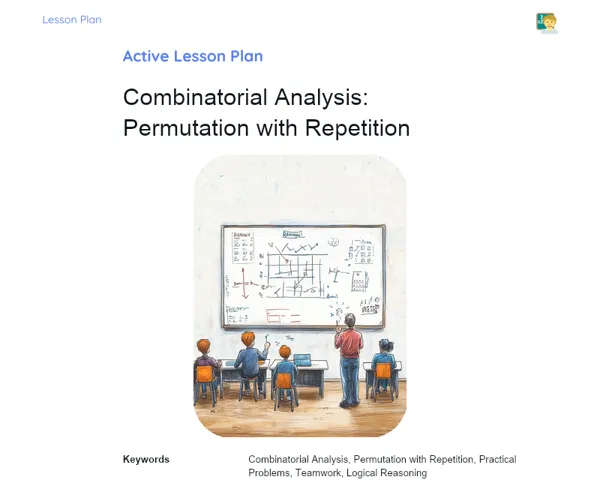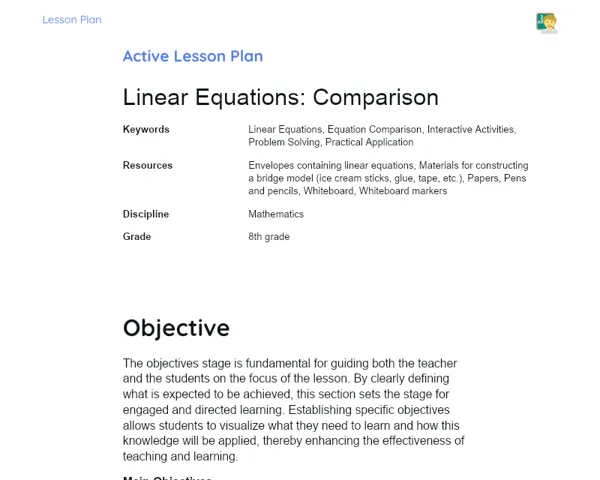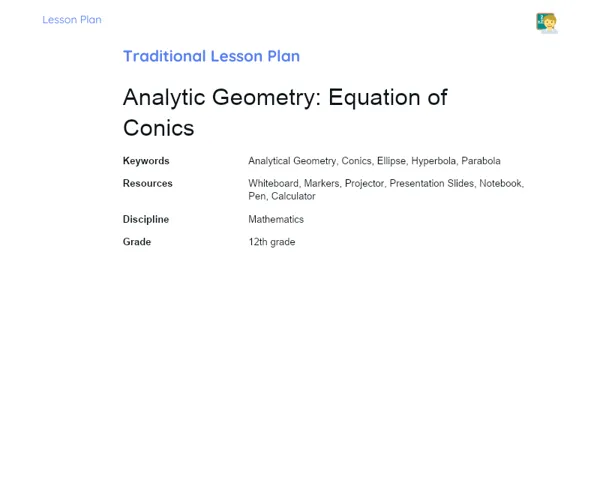Lesson Plan Teknis | Fractions: Equivalent Fractions
| Palavras Chave | Equivalent Fractions, Irreducible Fractions, Fraction Simplification, Practical Mathematics, Maker Activities, Physical Models, Critical Thinking, Everyday Applications, Engineering, Finance, Cooking |
| Materiais Necessários | Explanatory video on equivalent fractions, Recyclable materials (cardboard, bottle caps), Markers, Paper and pencils, List of fractions for fixation exercises, Whiteboard, Whiteboard markers |
Objective
Duration: (10 - 15 minutes)
This lesson plan aims to help students grasp the significance of identifying equivalent fractions and irreducible fractions. These skills are particularly valuable in various job sectors like finance and engineering, where accurate calculations and problem simplification are essential. Additionally, this foundational knowledge will ease the transition to more complex mathematical topics.
Objective Utama:
1. Identify equivalent fractions using natural numbers with different denominators.
2. Understand that there is only one simplest form of each fraction.
Objective Sampingan:
- Enhance skills for simplifying and comparing fractions.
- Promote critical thinking through analyzing fractions in varied contexts.
Introduction
Duration: (10 - 15 minutes)
This lesson plan phase is designed to ensure students understand the significance of recognizing equivalent and irreducible fractions. Mastery of these skills is vital in contexts like finance and engineering, which value mathematical accuracy and problem simplification. Furthermore, this base knowledge supports learning more advanced mathematics.
Curiosities and Market Connection
Did you know that equivalent fractions play a significant role in various industries? In engineering, simplifying fractions is critical for accurate calculations in construction. In finance, they help in calculating interest and fairly distributing profits. Even in cooking, adjusting recipes for different serving sizes often involves equivalent fractions.
Contextualization
Equivalent fractions are a key concept in mathematics, finding relevance in numerous everyday scenarios. For instance, when dividing a pizza among friends, we know that 1/2 can be expressed as 2/4 or 4/8 of the pizza. A solid understanding of equivalent fractions enables us to simplify issues and convey quantities in a clear and effective manner.
Initial Activity
Start the lesson with a 2-3 minute engaging video that whimsically explains the idea of equivalent fractions. After viewing, ask this thought-provoking question: 'If you were to share a chocolate bar among three friends, what different fractions might you use to illustrate that division?'
Development
Duration: (50 - 60 minutes)
The purpose of this stage in the lesson plan is to reinforce students' understanding of equivalent and irreducible fractions through engaging activities and reflection. By the end, students should confidently identify equivalent fractions and appreciate their importance in various commonplace situations and job sectors.
Topics
1. Understanding equivalent fractions
2. Techniques to find equivalent fractions
3. Identifying irreducible fractions
4. Real-life applications of equivalent fractions
Thoughts on the Subject
Encourage students to reflect on how simplifying fractions can aid in problem-solving across different areas. Ask how recognizing equivalent fractions might be beneficial in their daily lives and future professions.
Mini Challenge
Creating Equivalent Fractions
In this activity, students will build a visual representation of equivalent fractions using recycled materials like cardboard, bottle caps, and markers.
1. Divide the class into small groups of 3 to 4 students.
2. Hand out recyclable materials to each group.
3. Instruct students to draw a large circle on a piece of cardboard and segment it into equal parts (for example, 4, 6, or 8 sections).
4. Guide students to illustrate equivalent fractions on different circles, emphasizing that 1/2 equals 2/4, 3/6, etc.
5. Ask groups to present their models and explain their identification of equivalent fractions.
6. Hold a discussion on how visualization helps in grasping the concept of equivalent fractions.
This activity aims to provide students with a hands-on experience of equivalent fractions, reinforcing the concept through the construction and manipulation of physical models.
**Duration: (25 - 30 minutes)
Evaluation Exercises
1. Have students identify and write down three pairs of equivalent fractions.
2. Provide a list of fractions and ask them to highlight the irreducible ones.
3. Give problems that require students to simplify fractions to reach a solution.
Conclusion
Duration: (15 - 20 minutes)
The objective of this final phase is to solidify students' grasp of equivalent and irreducible fractions while highlighting their practical uses. The discussion and summary reinforce learning and allow students to reflect on the subject's relevance in real-life contexts, fostering a deeper understanding.
Discussion
Encourage a classroom discussion regarding different strategies to find equivalent fractions and their applications in daily life and the job market. Ask students how visualizing fractions through physical models aided in their comprehension of the concept. Invite them to share examples of equivalent fractions they discovered during the activity and to consider how simplifying fractions might simplify problem-solving in various situations.
Summary
Summarize the key points presented in the lesson, emphasizing the concept of equivalent fractions, their identification, and the significance of recognizing irreducible fractions. Stress that equivalent fractions represent the same value, despite differing numerators and denominators. Reiterate that each value has only one irreducible fraction, and simplifying fractions is an essential skill.
Closing
Illustrate how this lesson connected theoretical concepts with practical applications, showcasing the real-world relevance of equivalent fractions in fields like engineering, finance, and cooking. Finish the lesson by underscoring the necessity of understanding equivalent fractions for simplifying issues and communicating quantities efficiently, both in everyday scenarios and future careers.



